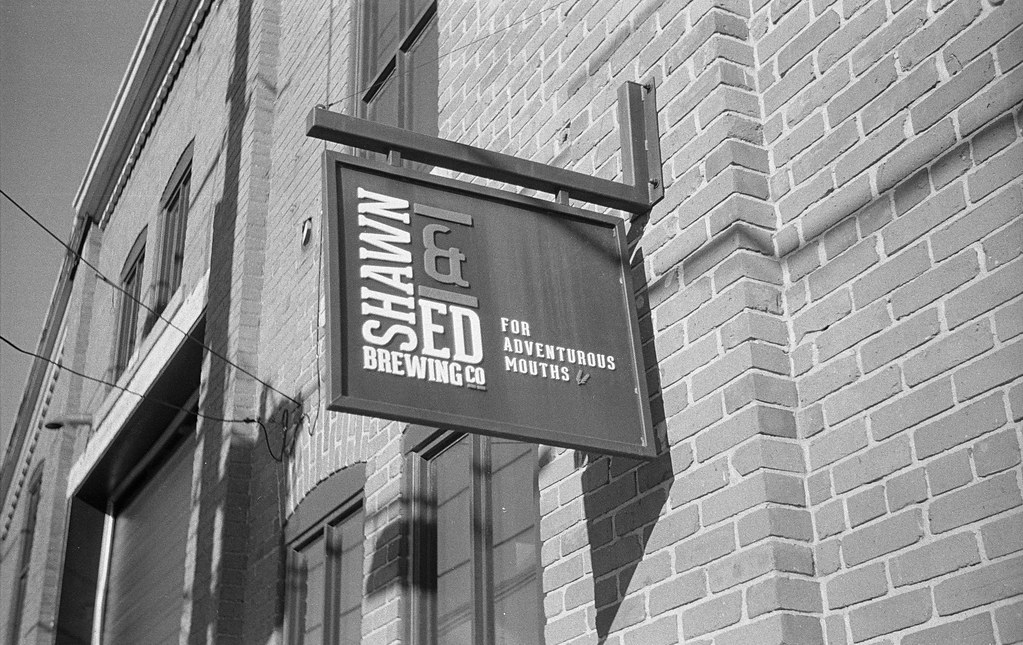I will always have a soft spot for a fixed lens rangefinder, especially one that uses Zeiss Optics. And the Contessamat SE is no slouch, despite being placed as the middle child in the Contessamat family, it certainly performs like a firstborn. While you will find it slightly different from its Japanese cousins, it’s compact nature, excellent optics, and semi-automatic functions will let it stand alongside those cameras. Thanks to James Lee for loaning this hidden gem out for a review.
Camera Specifications
Make: Zeiss Ikon
Model: Contessamat SE
Type: Rangefinder
Format: 135 (35mm), 36x24mm
Lens: Fixed, Zeiss Ikon Color-Plantar 1:2,8/45
Year of Manufacture: 1963-1965


Background
Zeiss Ikon’s Contessa line is a long-running camera model that dates to a folding rangefinder in 1950. While the manufacture of the original Contessa line ended in 1955, Zeiss Ikon refreshed the line with three variants in 1960. These rigid body rangefinders where called Contessa, Contessamat, and Contessamatic. The Contessa and Contessamatic saw initial release in 1960; the Contessamatic ceased production in 1963 replaced by the Contessamat. Zeiss Ikon produced a pair of cameras in the Contessamat line, the high-end SBE and the low-end SE. Despite being a low-end model, the SE proved a capable camera. The SBE proved an advanced camera for the age. The lens is a Zeiss Tessar 50mm f/2.8 lens; it was the flash system that set the camera apart. The flash system that matched the aperture setting to both the flash power and distance focused. The SE had the same selenium meter with match needle and coupled rangefinder, but lacked the flash system and Tessar lens, going instead with a less-expensive Color-Plantar lens. A year after the release of the first two cameras, the Contessamat saw release which was a SE but lacked a rangefinder. Still, it proved unpopular, and production ended in 1965. That same year, Zeiss released the STE, basically was an SBE but lacked the flash system. It also proved unpopular and production ended quickly. Production of the SE ended in 1965, but the SBE continued until 1967. However, the Contessa line continued production even when Zeiss Ikon absorbed Voigtlander and the final camera in the line the S310 and saw production until 1972. Much of the knowledge of camera construction absorbed into Rollei when they moved operations to Singapour.


Impressions
At first glance, you would not believe that the Contessamat is a rangefinder or even have a meter and semi-automatic exposure control. It is in all sense of the word a sleeper, a hidden gem. And yet the camera has all these features. A testament to the quality of the camera that came out of Zeiss Ikon during the mid-century. The one thing you’ll realise is that the camera’s selenium cell is located behind the front nameplate. But to be perfectly honest, there is little about the camera to excite you, spec-wise the camera is pretty midline. As design and layout are the Germans has slightly different ideas than the Japanese when it came to fixed lens rangefinders, some big differences and some bad. Since the camera is a leaf shutter, the exposure controls are all focused around the lens barrel itself. With focus, shutter speed, and aperture being stacked front to back. Now there are different control surfaces on each to allow you to differentiate between them, but at first feel, it can be difficult. Also, due to the small diameter of the lens barrel, the controls feel a touch cramped. Thankfully the automatic function does mean that you can set the shutter speed to the film speed and let the camera pick the right aperture, providing your example has a working meter. Probably the best feature of the camera is the viewfinder and where it’s positioned. Unlike traditional rangefinders which are offset from the lens and closer to the camera body edge, the Contessamat SE puts it right above the lens. Which allows for far easier composition for those who have a love/hate relationship with rangefinders. The viewfinder is also large and fairly bright with a big contrasty rangefinder patch. You get full exposure feedback with a needle indicator for the aperture and an optical view of the shutter speed. The shutter release is big, and a bit heavy, and the film counter is manual and worthless. One thing that is missing from the top plate is the film rewind. Which is instead located on the bottom plate and is flush into the body and is released when you want to rewind.


Experiences
There are some cameras that you get right off the bat; then there are others that take a bit to figure out. The Contessamat SE is one of the later. Having experience with Japanese fixed lens rangefinders is helpful in someways. When it comes to ergonomics in hand the camera feels like a brick, not to the same extent as the Argus C3, but close. I found the exposure controls hard to operate until I realised the camera had a working meter (selenium) and when I set the camera to automatic. The shutter speed to the film speed, the camera became far easier to operate as I just had to worry about the focus. And that part is easy with the big viewfinder and large rangefinder patch, throughout my whole roll I never found one image that I had missed the focus or even did a poor composition on thanks to the viewfinder placement and decent frame lines. The shutter button I found rather awkward and a little bit too tall from the camera body and heavy on the push, it didn’t jive well with a near-silent leaf shutter in the camera. Loading the film went without issue, and I got it right the first time, but having no rewind knob on the top meant I had no feedback until I hit the roll end because of the worthless manual film counter. The film advance isn’t too bad, while heavy it isn’t a long stroke, another saving grace. But the rewind system is sweet, as mentioned the rewind knob is on the bottom of the camera, and the film advance is released when you pop out the knob. But again it is a bit heavy, and I accidentally opened the back before the roll had been fully rewound. Thankfully I didn’t lose too many images.


Optics
Honestly, the lens on the Contessamat SE is where the camera stands out. Despite being a ‘lower-end’ lens, the Color-Pantar is no slouch. Remember, the high-end versions of the cameras used actual Zeiss Tessars. Although the Color-Pantar is a Zeiss lens and holds up to the same quality that lenses with the Carl Zeiss name mark. Which is interesting considering the Pantar is a triplet design (3 elements in 3 groups). Despite this, the images that are produced with the lens are sharp, almost edge-to-edge with no fall-off in the corners as you open up the aperture. The 45mm focal length is perfect for the camera and is in line with what other fixed-lens rangefinders are equipped with and with an f/2.8 isn’t the fastest but still decent all things considered. I would pit these optics against anything a Japanese camera has optically.


Lowdown
As a camera, the Contessamat SE is a bit of a hidden gem. While it isn’t the nicest camera to use, if you’re into fixed lens rangefinders from the mid-century but don’t want to go with the crowd, then the Contessamat SE is your camera. Sure there are higher spec models with full Carl Zeiss Tessar optics. But that Triplet Color-Pantar is an excellent choice. If you are looking at getting one, I cannot stress enough that you need to get one with a working meter. On the used market, the camera can be a bit of a steal with prices ranging from 65-130$, but honestly, I wouldn’t pay any more than 100$ for a working example. And while it handles a bit like a brick, I would shoot one of these over a C3 any day of the week.


Further Reading
Don’t just take my word on the Contessamat SE, you can check out the reviews by other awesome camera reviewers!
Dusty Shutter – Zeiss Ikon Contessamat SE Review
